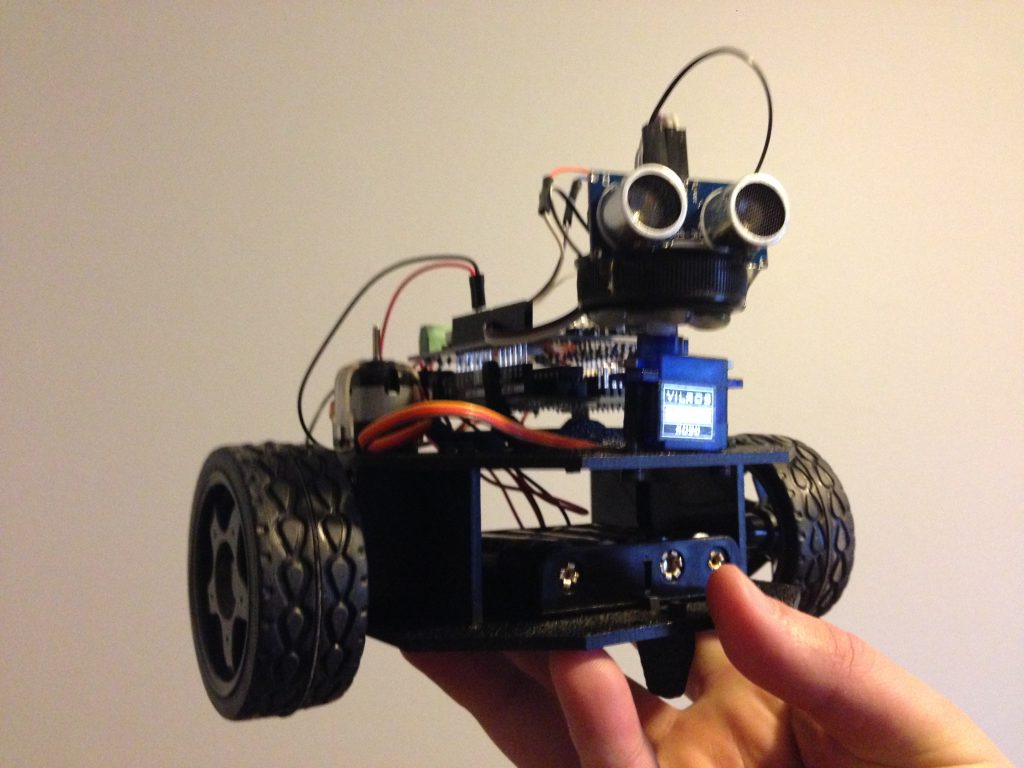Robotic Hamster in a Ball
Our higher education system is a rigid path that leaves little room for adapting or adjusting your curriculum as you learn and grow in your field of interest. With the exception of a few electives, or the more drastic choice of changing majors, you are more or less set in the courses and topics you will be studying. For many, this can mean something is missing by the time you graduate; it certainly was in my own education. I believe the technological opportunities of interest, that will make the most difference, are multi-disciplinary. For example, bionics, both for rehabilitation and augmentation, lie at the crossroads of mechanical, electrical, computer science, and biology. A single field such as mechanical engineer, my own undergrad, is only a facet of the skill set needed to solve the problems of tomorrow.
Since the internet boom and the 90’s, a majority of startups have over-focused on only a single field: software. To this point, entrepreneur and venture capitalist Peter Thiel wrote, “We wanted flying cars, instead we got 140 characters.” Bionics is more to the end of flying cars, an integration of software into a larger mechanical, electrical, and tangible system, versus a mere 140 characters.
This integration of data into the physical, commonly phrased as “marrying bits with atoms,” was a veil I needed to pierce. On the other side was the ability for logic, for input from the environment and control of machines. On the other side was the ability to design and build robots, a world of complexity yet unavailable to me. If I had this skill, Ethan’s prosthetic hand could have been very different. Let alone even the option to contribute that aspect of the design myself, I was not fully aware of the complexities needed to control the prosthetic hand and what type of team member would be requisite to add those skills.
With that gap in mind, I dedicated myself to Harvard’s online CS50 class Introduction to Computer Science in the fall of 2015. Lead by the renowned David Malan, CS50 is a brilliant, well-constructed, thoughtful, and thorough introduction of how computers work and how you can begin working with them. With resources like these available for free and independent of location, there was no excuse to not continue my education. My goal of coupling hardware and software was in reach.
The class was taxing, but rewarding. It began with the most basic of fundamentals, understanding bytes and computer memory, and progressed through low level languages, like C, to languages used for web design. I learned to differentiate between the two and what I needed to focus on for my own purposes.
My final project resulted in a simple robot. Its brain was an Arduino microcontroller. Its window to the outside world were IR sensor “eyes.” Its goal was to move about and not run into things, an obstacle avoider. These types of robots are nothing new, I even based mine off a wonderful open design on Instructables. I opted to challenge myself and make the code my own by using different sensors than the design prescribed. I opted for two IR sensors versus a single ultrasound on a rotating servo (although I eventually did add this in). The result… he avoids most things. Essentially he’s a little robotic hamster in a ball exploring the environment.

He’s not very smart yet, which is why I have named him “Dipshit.”
As dumb as he may be, Dipshit is improving and I am learning from his failings. The goal is reliable autonomy, essentially to have him running around my house for a prolonged period of time without any interaction from a human.
Dipshit is a crowning achievement for me, a foothold into a world I could not access merely through my undergraduate education alone. By continuing my education with resources available online, I had created a piece of powered machinery that took input from the environment and made decisions.
I will be harnessing my mechanical experience and newfound software skills with an eye towards new designs in rehabilitation technology, and eventually… augmentation.

